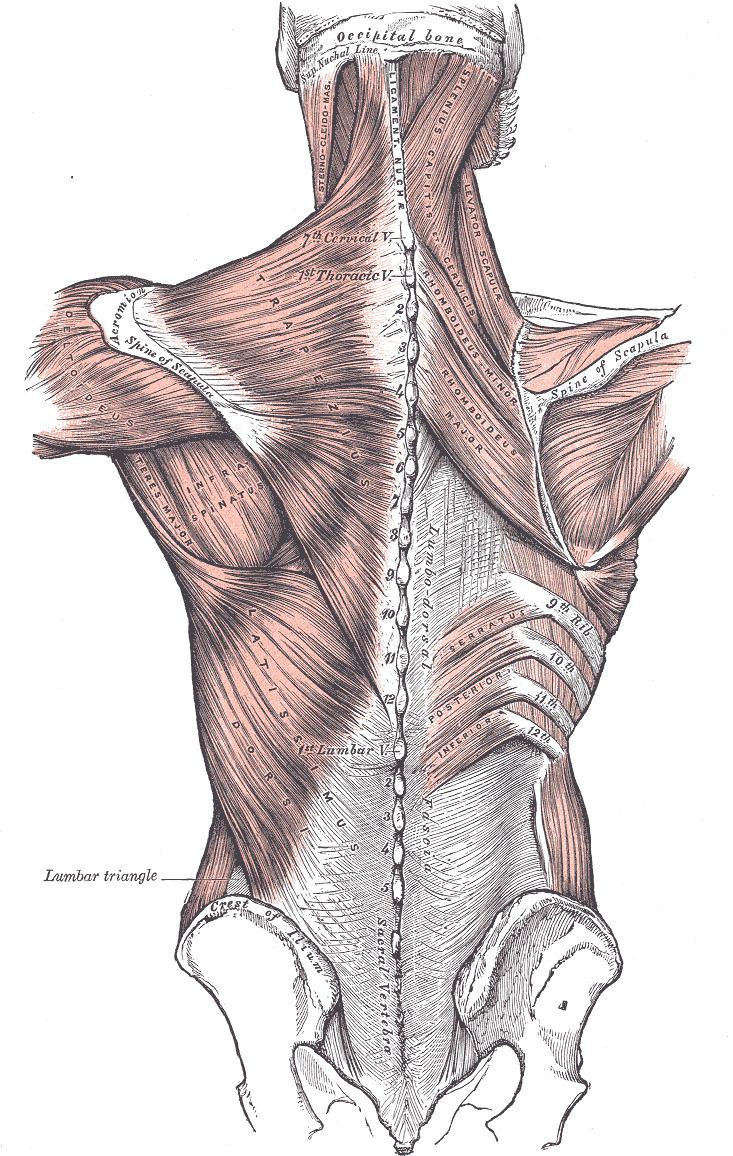Dorlands
/Elsevier f_03/12355635 FMA 25072 | TA A04.3.02.501 | |
 | ||
Latin fascia thoracolumbalis, fascia lumbodorsalis | ||
The thoracolumbar fascia (lumbodorsal fascia or thoracodorsal fascia) is a deep investing membrane throughout most of the posterior thorax and abdomen although it is a thin fibrous lamina in the thoracic region. Above, it is continuous with a similar investing layer on the back of the neck—the nuchal fascia.
It is formed of longitudinal and transverse fibers that bridge the aponeuroses of internal oblique and transversalis, costal angles and iliac crest laterally, to the vertebral column and sacrum medially. In doing so, they cover the paravertebral muscles.
It is made up of three layers, anterior, middle, and posterior. The anterior and middle layers insert onto the transverse processes of the vertebral column while the posterior layer inserts onto the tips of the spinous processes, hence it is indirectly continuous with the interspinous ligaments.
The anterior layer is the thinnest and the posterior layer is the thickest. Two spaces are formed between these three layers of the fascia.
